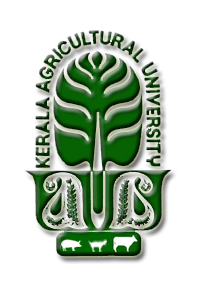The main objective of this course is to equip students and stakeholders with knowledge of Intellectual Property Rights (IPR) related protection systems, their significance and use of IPR as a tool for wealth and value creation in a knowledge based economy.
To acquaint the students with the prevailing cropping systems and practices in the country and measures to improve their productivity
To sensitize the students on the theory and practice of classifying organisms (with special reference to animals) and the rules governing the same. To introduce the students to the classification of insects up to the level of families with hands-on experience in identifying the families of insects with an emphasis on the practical aspects.
To study the nomenclature, classification and characters of fungi
To acquaint with the structure, virus- vector relationship, biology and management of plant viruses
To acquaint with plant pathogenic prokaryote (procarya) and their structure, nutritional requirements, survival and dissemination
To educate the principles and concepts of sensory evaluation and quality control of horticultural produce.
Theory
TOPIC 1 - Sensory importance,Methods, panel selection,laboratory and Role of human senses:
Importance and methods of sensory analysis .Requirements of sensory evaluation laboratory; Organizing sensory evaluation programme;Panel selection and training.Analysis for various sensory characters . Appearance, taste, smell, colour, texture and flavour. Role of human senses:1) Eye/Sight 2) Ear/Hearing 3) Skin/Feeling/Touch 4) Taste Buds/Taste, 5)Olfactory Epithelium/
Smell Different tests for sensory evaluation - Detection, threshold and dilution tests. –Subjective tests:discrimination, descriptive, affective; Flavour profile and tests; Ranking tests.Role of sensory evaluation in product optimization. Sensory analysis for consumer evaluation.Designing of experiments. Interpretation of results.Methods of sensory evaluation of different food products. Designing of experiments. Handling and interpretation of data.Relationship between objective and subjective methods. Computer-aided sensory evaluation.Concept of quality: Quality attributes- physical, chemical, nutritional, microbial, and sensory;their measurement and evaluation; instrumental vis-à-vis sensory methods for testing quality.Functions and methods of quality assessment of fruits and vegetable products. Specifications for finished products.Microbial spoilage- Food poisoning- Control measures Food laws and Quality control. Prevention of Food Adulteration (PFA), FSSAI, ISO accreditation. EurepGAP Certification, SQF 1000, SQF 2000. HACCP, other standards and theirimportance in Quality Control. GAP, GMP, GLP. Organic Certification.
Practical
Procedure for sensory analysis. Identification of basic taste, odour, texture and colour. Determination of threshold activity. Hedonic testing. Testing of individual and overall quality by ranking. Optimizing a product by sensory analysis. Hi-tech laboratory methods for quality control. Physico-chemical analysis of fresh material and finished products. Microbial load on samples. Quality estimation in processed material through FSSAI estimations. Estimation of nutritive value of fruits and vegetables: Carbohydrate, proteins, fat, vitamins, minerals etc.Analysis of processed products for fibre, flavonoids, vitamins, carotenoids, glucosinolates, fats ,antioxidants etc. Visit to incubation centres of food processing and food parks.Procedure forsetting up of a processing unit registration and licensing of processing unit with FSSAI. Familiarizing with codex standards.
This course will impart knowledge on cellular structure and function that determine of carbon and nitrogen metabolism, lipids, enzymes and secondary metabolites in plants. Relevance of metabolic processes on growth and development leading to productivity will be dealt.
This course is meant for students who do not have sufficient background of Statistical Methods. The students would be exposed to concepts of statistical methods and statistical inference that would help them in understanding the importance of statistics. It would also help them in understanding the concepts involved in data presentation, analysis and interpretation. The students would get an eXposure to presentation of data, probability distributions, parameter estimation, tests of significance, regression analytical techniques.
This course aims to introduce various techniques and instrumentation methods required for the study of microorganisms. This course provides understating of techniques and methods of microscopy, spectroscopy, chromatography, and electrophoresis.
The course deals with scientific methods of research, the initiation of an inquiry, formulation of research problems and hypotheses, the role of induction and deduction in research, collection and analysis of date and interpretation of results
To understand about economics of environment and social costs incurred due to economic development. Work out methods to maintain environment quality and reduce social costs
The course envisages the concepts and principles embodying microeconomics. The economic problems, functioning of price mechanism, theory of household behaviour and consumer’s demand function.
Theory of firm, supply determinants, determination of price under different market structures and factor pricing (micro economic components
To eXpose the students to develop the concept, significance and uses of production economics. To understand the relationships between factors and output. To learn how to decide the combination of inputs to be used as per the resources available. Ensure that the production process works efficiently.
